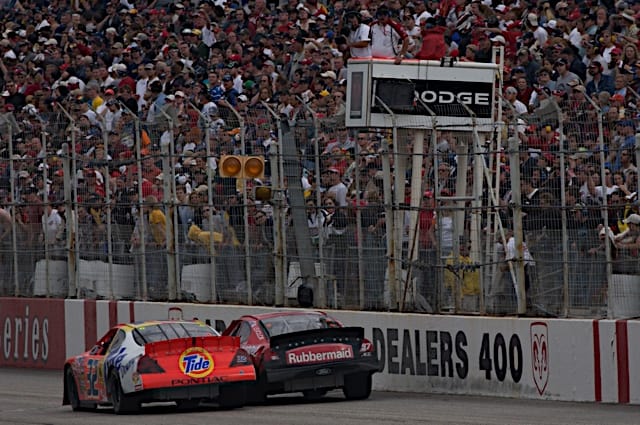Every once in a while, racing reminds us that history isn’t just in the distant past, but it’s happening right here, right now.
Such was the case on Sunday (Feb. 25) at Atlanta Motor Speedway, when Daniel Suarez edged out Ryan Blaney and Kyle Busch to win the Ambetter Health 400 by just 0.003 seconds, the third-closest margin of victory in NASCAR Cup Series history.
The third-closest finish ever (maybe — we’ll get to that), and it was wild. The rest of the race was a bit of a disaster — a crash-fest that saw 35 of 37 cars involved in at least one incident. That 95% of the field involved in something was also a record, by the way. Then that finish was one for the record books.
Opening that record book is an interesting exercise, because there’s a lot to unpack in what’s a simple enough list: the closest finishes in Cup Series history.
First off, it has to be said that prior to the late 1960s, margin of victory was often recorded in distance (car-lengths, yards or laps) because the sport simply didn’t have sophisticated timing equipment. And, to be fair, a lot of races were won by a lap or more, making that a more relevant point of reference.
Even taking that into account, though, the vast majority of the sport’s closest recorded finishes have occurred in the most recent third of its existence. Of the 50 closest MOV in the Cup Series, 43 have come after NASCAR’s 1998 50th anniversary.
So let’s take a closer look here.
Of the top 50, 33 took place at either Daytona International Speedway or Talladega Superspeedway plus Sunday’s at the reconfigured Atlanta, a pseudo-superspeedway (the list includes Daytona 500 qualifying races). That should not come as any surprise. Why?
Restrictor plates. The plates, and later the tapered spacer, rob a car’s engine of oxygen, and that means less horsepower, effectively equalizing the field on power. And with equal power, the field doesn’t spread out much, especially as the cars have gotten more and more aerodynamic.
Restrictor plates were meant to be a temporary measure to slow the cars down as speeds rose well above 200 miles per hour and the danger of the speeds became a real concern. The plan was to find a permanent solution, but as time went on, those finishes ramped up in intensity and got closer and closer. That arguably raised the danger level, but it also sold tickets and raised TV ratings as the sport’s popularity began to soar. So the plates…
Click Here to Read the Full Original Article at …

